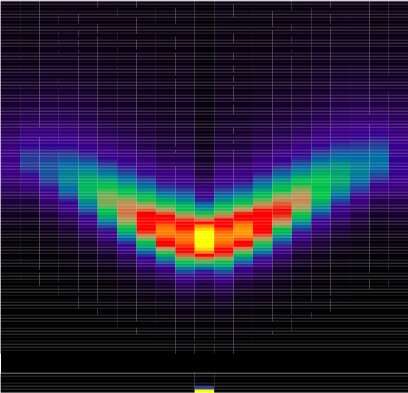Higgs particle in condensed matter
Recently published experiments with inelastic neutron scattering in Nature Physics (Nature Physics 13, 638 (2017)) have identified the amplitude or Higgs excitation in the two-dimensional quantum magnet C9H18N2CuBr4, i.e. a quantum material of coupled spin ladders with weak Easy-Axis spin anisotropy. Motivated by these data, researchers from the RWTH Aachen, the Harbin Institute of Technology and the FAU Erlangen-Nuremberg have carried out theoretical investigations of the dynamic structure factor of coupled spin conductor systems using quantum Monte Carlo (QMC) simulations, which allow a quantitative understanding of the magnetic excitations including the amplitude Higgs particle. This work has been published in the last issue of Physical Review Letters with special recommendation of the editors (see Physical Review Letters 122, 127201 (2019), editors suggestion, and the review on phys.org).
The observation and understanding of the Higgs amplitude particle in quantum materials is exciting as it combines high-energy physics research (Nobel Prize 2013 for the observation of the Higgs particle) with similar concepts in solid-state physics. Interestingly, the Higgs amplitude particle is unstable in two spatial dimensions, so the potential experimental discovery of this particle in a two-dimensional quantum magnet of coupled spin ladders by inelastic neutron scattering was a surprise. For this experimental work, Kai Phillip Schmidt (FAU) had developed an approximative theory, which has now been impressively confirmed by QMC simulations in a collaboration with Stefan Wessel and his postdoctoral fellow Tao Ying from RWTH Aachen University.
QMC simulations allow to quantitatively determine the key parameter for inelastic neutron scattering, the so-called dynamic structure factor, for a two-dimensional system of coupled spin ladders. The dynamic structure factor contains the full information about the magnetic particles of a quantum magnet, so that in particular both a comprehensive understanding of the Higgs amplitude particle within the theoretical model could be obtained and this exciting particle in the quantum magnet C9H18N2CuBr4 could be proven beyond doubt. Furthermore, this particle could be traced within the theoretical model up to the so-called Ising limit, which makes it possible to understand the Higgs amplitude particle as a bound state of two conventional magnetic particles, analogous to the formation of a molecule from two atoms.
Based on these theoretical findings, there are further interesting questions for future research. In particular, it will be important to gain a physical understanding of the Higgs amplitude particle by bringing the system closer to quantum critical points, e.g. by applying an external magnetic field or external pressure. How will the Higgs amplitude particle behave in this situation? Will it become unstable under these circumstances and decay?
References:
Tao Ying, Kai Phillip Schmidt, Stefan Wessel
The Higgs Mode of Planar Coupled Spin-Ladders and its Observation in C9H18N2CuBr4
Physical Review Letters 122, 127201 (2019)
Tao Hong, M. Matsumoto, Y. Qiu, W. Chen, T.R. Gentile, S. Watson, F.F. Awwadi, M.M. Turnbull, S.E. Dissanayake, H. Agrawal, R. Toft-Petersen, B. Klemke, K. Coester, K.P. Schmidt, D.A. Tennant
Direct observation of the Higgs amplitude mode in a two-dimensional quantum antiferromagnet near the quantum critical point
Nature Physics 13, 638 (2017)
Contactt:
Kai Phillip Schmidt
phone 09131 85 28443
